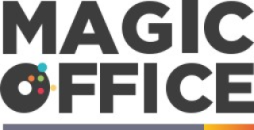
The Art of Prioritization: Aligning Tasks with Business Goals
Understanding Task Significance in Office Management
Efficiency in the office starts with the judicious art of prioritization. An office manager's standout skill often lies in linking daily tasks to overarching business objectives. Identifying high-impact tasks that align with the strategic goals of an Arabian Emirate company is crucial. This begins with a comprehensive analysis of the company's mission and understanding which office functions are paramount in bolstering the business trajectory.
For instance, prioritizing client follow-ups or contract renewals directly influences customer satisfaction and, ultimately, company revenue. Conversely, spending excessive time on less impactful activities can drain resources and detract from the main objectives. Statistics show that aligning work with strategy can lead to a substantial increase in overall productivity.
Setting Priorities with Precision
- Urgent vs. Important: Managers must differentiate between tasks requiring immediate attention and those that are important but not time-sensitive.
- Value Assessment: Assign a value to tasks based on how they contribute to the success of business outcomes, focusing on those with higher returns on investment.
- Resource Allocation: Evaluate how resources are currently used and adjust allocations to support the most strategic tasks first.
Real-life examples from within the industry illustrate that once an office manager becomes adept at this prioritization process, the entire office workflow can be aligned to meet business objectives more efficiently.
Empowering Teams Through Prioritized Goals
When office managers effectively communicate priority tasks to their teams, they create a roadmap for success. This clarity not only streamlines operations but also empowers employees by giving them a sense of purpose and direction in their daily work. One powerful quote by Stephen Covey, 'The key is not to prioritize what's on your schedule, but to schedule your priorities,' encapsulates this idea. Managers can facilitate this by holding regular meetings to reassess and realign priorities ensuring that team efforts are focused and coherent with business goals.
By embracing the art of prioritization, office managers can lead their teams to peak efficiency, effectively setting the stage for the subsequent facets of optimizing office workflow including leveraging technology for automation, eliminating time wasters, and fostering a productive office ecosystem.
Leveraging Technology: Automation and Tools to Maximize Time
Embracing Digital Tools to Streamline Workflow
In today's fast-paced business environment, office managers can significantly increase efficiency by harnessing the power of automation and cutting-edge tools. The integration of digital project management applications such as Asana or Trello allows for a seamless transition from manual task handling to automated processes. These platforms facilitate real-time collaboration and offer a transparent overview of project statuses, driving productivity and ensuring that team efforts are closely aligned with overarching business goals.
Automating Repetitive Processes
Time is a precious commodity in office management. Automating routine tasks, such as scheduling, data entry, and reporting, frees up valuable hours. Software solutions like Zapier or Microsoft Flow can connect different applications to create automated workflows that execute repetitive tasks without manual intervention. According to a Forrester report, automation can reduce manual tasks by up to 20%, allowing the office staff to focus on more strategic initiatives that contribute to the company's success.
Exploiting Data Analytics for Informed Decisions
Through data analytics tools, office managers can gain invaluable insights into how time is spent within the organization. Tools such as Google Analytics and Tableau enable the tracking of key performance indicators (KPIs), spotting trends, and making data-driven decisions. These insights help in refining operational strategies to enhance office efficiency. A robust analytics platform serves not just to illuminate inefficiencies but also to spotlight opportunities for process optimization.
Investing in Training for Maximum ROI
While the introduction of new technology can revolutionize office operations, its success is contingent upon user adoption. Investment in comprehensive training sessions ensures that the team is well-versed in the functionalities of these time-saving tools. As reported by Capital One, companies that invest in employee training see a return on investment (ROI) five-fold, as employees better leverage technology to drive efficiency and productivity.
With strategic implementation of automation tools, office managers can streamline tasks, eliminate time wasters, and establish a workflow that is both efficient and highly conducive to achieving business objectives. By following these guidelines, the goal of optimizing time for peak performance becomes an attainable reality instead of a distant dream.
Eradicating Time Wasters: The Path to Enhanced Office Efficiency
Identifying and Eliminating Time-Sapping Habits
Office managers often face a daily onslaught of potential time wasters that can disrupt the flow of a productive workday. In the pursuit of achieving peak efficiency, it's imperative to pinpoint and eliminate actions that do not align with the overarching business goals discussed in the art of prioritization. Common culprits include excessive meetings, unmanaged email inboxes, and multitasking, which studies have shown can reduce productivity by as much as 40%. Office managers should conduct regular analyses to identify these habits and implement structured policies or practices, like designated 'no interruption' times, to protect their team's focus and time.
According to a report by McKinsey, the average worker spends an estimated 28% of the workweek managing email. By optimizing email management, possibly through automation tools or scheduled email checking times, office managers can reclaim hours for more strategic tasks.
Creating a Culture of Accountability and Focus
Even with the best time management strategies, the overall office productivity can be hindered without a strong culture of accountability. Promoting a work environment where every employee takes responsibility for their time can contribute significantly to minimizing wasted hours. Office managers can lead by example and set clear expectations about time management. Strategies such as the implementation of time tracking software can encourage a more focused and deliberate approach to task completion, thus fostering a productive office ecosystem.
Statistics show that a well-implemented time-tracking system can increase individual productivity by up to 30%. Emphasizing outcomes rather than hours spent can motivate employees to optimize their work patterns and contribute to the team's success.
Streamlining Communication for Greater Time Efficiency
In today's fast-paced office environments, communication is a double-edged sword. While necessary for collaboration and decision-making, ineffective communication practices can spiral into significant time drains. Office managers should advocate for clear, concise, and purposeful communication. This might include short stand-up meetings versus extended sit-downs, or utilizing collaborative platforms that centralize communications and allow for real-time project updates.
Investing in communication tools that align with automation technologies mentioned in the leveraging technology section can cut down the time spent in back-and-forth email exchanges. For example, platforms like Slack or Microsoft Teams can consolidate communications, reducing email volume by up to 48.6% and meeting time by 21.7%, according to a study by the Harvard Business Review.
Cultivating a Productive Office Ecosystem: Tips and Tricks for Office Managers
Crafting a Culture of Productivity
Productivity is not just about managing time; it's about cultivating the right environment and mindset. As an experienced office management analyst, it is apparent that a thriving office ecosystem depends on a culture that values productivity. To build this culture, empower your team with a sense of ownership over their work and encourage open communication. Set clear expectations and provide regular feedback to ensure everyone is aligned with the company’s goals. A positive atmosphere that celebrates achievements can effectively motivate staff and improve performance.
Implementing Efficient Space Design
Another critical factor to consider is the physical office space. An organized, clutter-free environment can significantly impact productivity. Investing in ergonomic furniture and suitable lighting can prevent fatigue and create a welcoming workspace. An optimal office layout should facilitate easy movement and reduce unnecessary distractions. Additionally, having dedicated zones for collaboration and quiet areas for focused work can cater to various tasks and working styles, ultimately enhancing overall efficiency.
Embracing Flexible Work Arrangements
In today's fast-paced business world, flexibility is key. Offering flexible work arrangements can lead to greater job satisfaction and improved productivity. By trusting employees to manage their schedules and work remotely when needed, office managers can foster a more responsible and dedicated workforce. However, it's crucial to establish clear guidelines and maintain regular check-ins to ensure that remote working does not impede team collaboration or individual accountability.
Investing in Employee Growth and Development
An office that supports continuous learning and development is one that continues to grow and improve. Providing opportunities for professional growth not only enhances skill sets but also ensures that your team stays innovative and ahead of the curve. Regular training, workshops, and conferences can keep your staff updated with the latest industry trends and best practices. An investment in your employees' growth is an investment in the company's future.
Fine-tuning Workplace Policies and Procedures
Efficiency is closely tied to how well workplace policies and procedures are defined and executed. Reviewing and streamlining these regularly can eliminate bottlenecks and redundancies. Ensure that all processes, from onboarding new hires to managing projects, are as smooth and straightforward as possible. This may involve adopting new project management tools or revising communication protocols to ensure that your team operates like a well-oiled machine.






-large-teaser.webp)


